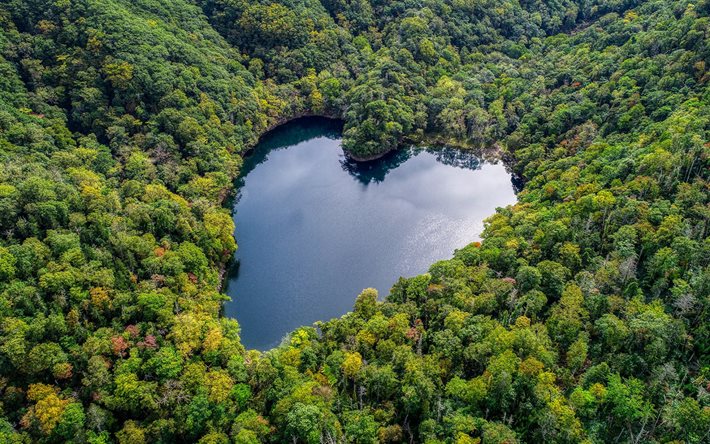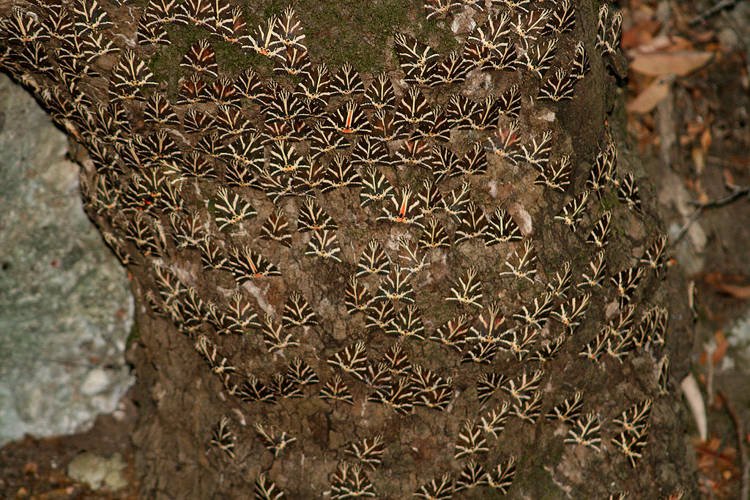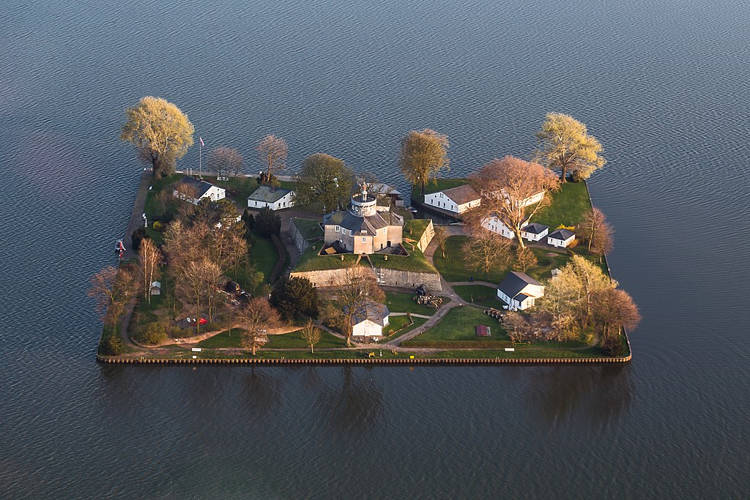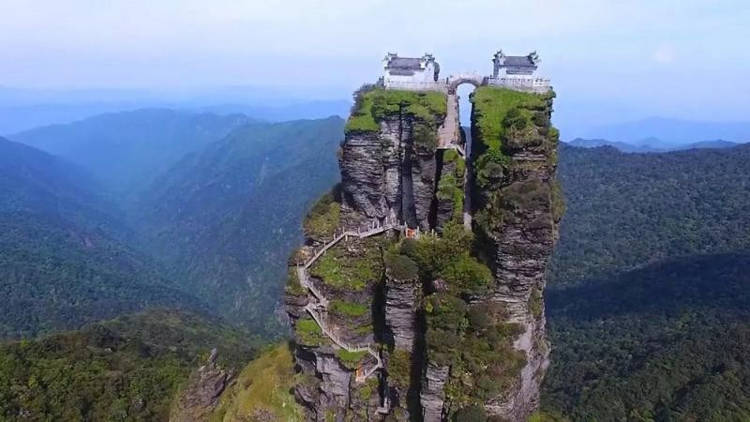Devil’s Bath – New Zealand’s Neon Green Sulphur Pond

New Zealand’s Wai-O-Tapu volcanic area offers no shortage of intriguing natural wonders, but perhaps the most eye-catching one is Devil’s Bath, a bright green pond full of sulfur-infused stink water. Devil’s Bath gets its color from a combination of hydrogen sulfide gases and ferrous salts. The shade and intensity of the green sludge depends on the […]
“Tree of Life” Grows on Salt Island in the Middle of the Dead Sea

A tree seemingly growing out of a pristine white salt island in the heart of the Dead Sea isn’t something you’d expect to see when visiting the world’s saltiest body of water, and yet that’s exactly the sight you’re treated to near the beach of Ein Bokek. With a salt concentration over 10 times that […]
Villagers Hand-Carve 1.2Km Mountain Tunnel to Connect Their Home to the Outside World

The Guoliang Tunnel connecting the clifftop village of Guoliang, in China’s Henan province, to the outside world was carved by hand using basic tools like chisels and hammers, and is now referred to as the eight wonder of the world. For centuries, the people of Guoliang, a small Chinese village perched atop a cliff in […]
Parigala – Azerbaijan’s Mysterious Fairy Castle

At the foothills of the Caucasus Mountains in northwest Azerbaijan, lies Parigala, one of the world’s most impressive archeological mysteries. Carved into the nearly vertical face of a rock cliff, the centuries-old structure remains a mystery that hardly anyone knows anything about. The idea that an amazing site like Parigala (literally ‘Fairy Castle’ in Azerbaijani) […]
Toyoni – Japan’s Naturally Heart-Shaped Lake

Surrounded by lush forest on all sides and untouched by human civilization, the heart-shaped Lake Toyoni is a hidden gem among Japan’s many tourism attractions. Up until a few years ago, Lake Toyoni was virtually unknown to most Japanese, but a popular television commercial featuring an aerial view of the heart-shaped natural wonder turned it […]
Greece’s Unique Valley of Butterflies – A Real-Life Natural Paradise

The Greek island of Rhodes is home to a special biome called Petaloudes Valley, or the Valley of Butterflies, after the millions of endemic moths that cover almost every surface during the summer months. Located on the western side of Rhodes Island, about 10 kilometers from 10 km from the airport and 25 km from […]
The Loneliest Monk in Tibet Lives Alone in This Isolated Temple

Located on top of a small mound, on a sliver of land stretching into the serene Yamdrok Lake is Rituo Temple, the home of just one solitary monk who spends his days chanting sutras and meditating. Rituo, which means “the stone on the mountain” in Tibetan, is often referred to as Tibet’s loneliest temple. It […]
Breiðamerkursandur – Iceland’s Stunning Diamond Beach

A black sand beach littered with huge chunks of glistening ice has become one of the most visited attractions in Iceland, and for good reason, it looks like something out of a fantasy movie. Known as Breiðamerkursandur in Icelandic, Diamond Beach takes its name from the chunks of pristine ice scattered across the black volcanic […]
Dubai’s Love Lake – Two Hearts in the Middle of the Desert

Love Lake, a heart-shaped, man-made lake located in the desert near Dubai, is probably one of the most impressive attractions for romantic couples visiting the Middle-East. From its iconic palm-shaped island, to skyscrapers like the Burj Khalifa, Dubai has no shortage of world-renowned attractions, but there is a lot more to discover in the desert […]
Island in Middle of German Lake Is the Perfect Pandemic Retreat

Wilhelmstein Island, an artificial island on Lake Steinhude in the Hanover region of northwestern Germany, looks like the perfect place to isolate yourself during a pandemic. The story of Wilhelmstein Island began in 1761, when Count Wilhelm von Schaumburg-Lippe, ruler of the County of Schaumburg-Lippe-Bückeburg and an important military commander in the Seven Years’ War, […]
These Two Islands Are Just 2.4 Miles Apart, But Have a 21-Hour Time Difference

The Diomedes, two small islands in the Bearing Sea are famous as one of the few places where you can travel back in time, sort of… The international date line is an imaginary line that runs through the middle of the Pacific Ocean, marking the difference between calendar dates. Crossing the line from east to […]
The Stunning Twin Temples Atop China’s Holy Mount Fanjing

Mount Fanjing, in southwestern China’s Wuling mountain range, is home to one of the most otherworldly sights on the planet: two small temples built atop a split rock spire, connected by an arched bridge, overlooking a stunning natural paradise. Perched at the top of the natural rock spire known as the Red Clouds Golden Peak, […]
Bua Thong Sticky Waterfalls – A Waterfall You Can Climb With Your Bare Feet

Waterfalls are notoriously slippery, so trying to climb them without specialized gear is usually a bad idea, but at the Bua Thong Waterfalls in Thailand’s Chiang Mai province visitors can climb almost vertical falls using only their hands and feet. The so-called Sticky Waterfalls get their name from the incredibly grippy limestone rocks that the […]
This Japanese Building Has a Highway Passing Right Through It

The Gate Tower Building is one of the many several tall office buildings that make up Osaka’s impressive skyline, but there is something about it that makes it unique in the world – it has a functional highway going right through it. Photos of this architectural anomaly have been doing the rounds on social media […]
Chinese Tourist Attraction Lets You Experience Kung Fu Movie Flying First Hand

A unique tourist attraction in southeastern China’s Fujian province lets wuxia fans fulfill their dream of experiencing the flying techniques of the kung-fu masters they used to watch on TV growing up. If you’re a fan of popular wuxia films like “Crouching Tiger, Hidden Dragon” or “House of Flying Daggers”, you’ve probably fantasized or even […]
